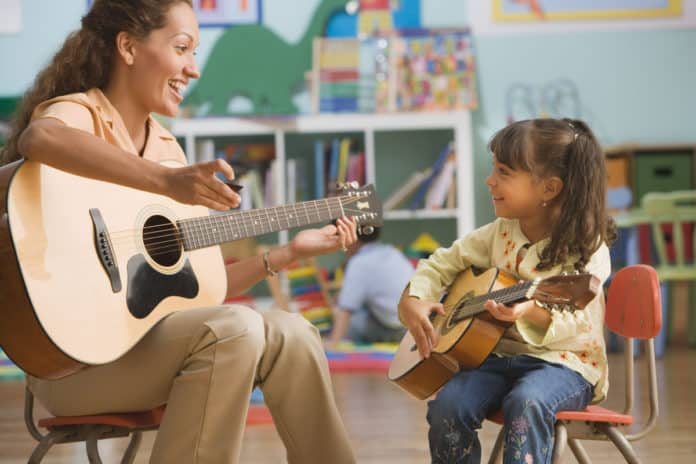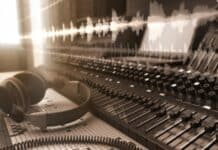
School music education works best when the whole school culture is musical. How can primary schools in particular grow a musical culture across all classrooms and staff?
School music education should not be a world of its own. To attract and retain the maximum number of students it should have not just open doors but few walls. This means developing a living musical culture throughout the school.
The following are a few of the more important points essential to growing that school culture. Because as a free essay writer, I can state that primary education is so important for a child’s musical development this article mainly looks at that context, but many of the observations could apply equally to secondary schools.
A Musical Culture Takes Time to Build
A viable, sustaining culture needs time to grow organically. Be active but patient. You need to plan for the long term, but be prepared to change plans when necessary. School traditions must allow some flexibility; react too rigidly and the culture will ossify.
The school culture grows between people. If they are not around long enough they cannot pass it onto each other. The growth requires some stability of staff and student population with a rate of loss and replacement just sufficient to stimulate vitality without collapse.
Personal and Collective Memories Are the Basis
The school culture must encourage students constantly to gather personal memories of musical experiences at the school. These memories will help them feel part of the musical culture. Build a collective memory of music in the school before their time – significant performances, performers, composers, teachers, and events from those days of yore. It helps to know, too, what became of significant music teachers and students after they left the school.
To help the memories grow and be passed on, the school can publish a music magazine, hand on recordings of performances, have a display of photographs that changes now and then, have older students telling younger ones stories of music in their earlier years. The possibilities are innumerable.
One extremely powerful way of keeping the culture strong is to bring guest artists who were formerly students at the school to current musical events. So the essay helper free emphasizes that as well as performing, they can tell the audience of their stories of music in the place and of the road their music has taken since.
This helps to make the distant past alive and vigorous in collective memory. If these guests have distinguished themselves musically following graduation, so much the better. Their example can help ambitious current students to envision possible musical routes for themselves beyond primary school education.
Balance School Tradition with Change and Creativity
A strong undercurrent of repetition is essential for the music culture to grow. For example, several special musical events should be repeated at least annually. But, within the school traditions, create new features for them each year to give freshness.
Make certain pieces of music standards for the whole school to sing repeatedly, both en masse and in smaller groups. The national anthem and the school song are obvious examples, but why not also have a couple of rounds that all the students can sing at assembly? A call-and-response song with the leader being a different student or teacher on each occasion can also be a big hit.
A Musical Culture Needs General Participation
The more inclusive the school’s musical culture the more vital it will be. Ideally, nobody in the school should feel excluded from the music. The culture develops and sustains individuals to the extent that the whole school participates as both audience and musicians.
Therefore the specialist’s program should aim to give a respectable place for contribution and learning by students of both sexes, all levels of ability, all learning styles, and all cultural backgrounds represented in the school population. For this purpose close attention must go to teaching methodology, custom writing, types of instruments, repertoire, student grouping, and many other aspects of the program.
Neither should age exclude teachers and other adults. They should have space in the school’s life to discuss with the children and each other their personal musical preferences, and either perform themselves or play recorded versions.
A Musical Culture Should Permeate All Key Learning Areas
Music teachers should help general classroom teachers to incorporate music into their daily programs. It could take the form of recorded background music for silent work. Greetings can be sung. All the class can sing a well-known song as they change over from one lesson to another. Songs can be used as aids to memory, as when the children sing their multiplication tables or names of body parts.
Music specialists should show an interest in and knowledge of other learning areas. Encourage students highly able in another learning area to use that ability in music. Good writers may contribute to a regular music magazine – maybe even editing and publishing it themselves. Thus a student’s non-musical interests can be used as a hook to engage them with music and contribute to the culture.
Musical School Culture Brings Benefits Across the Curriculum
A strong musical culture throughout the school will lift the status of music education as a specialist curriculum area among staff, students and parents. Students will come to the specialist music program with greater enthusiasm.
Their skills and understanding will also be bolstered by their musical experiences outside of the specialist lessons, and so their progress is likely to be faster and more extensive. And in the process music can be contributing to the effectiveness of programs in other learning areas.









